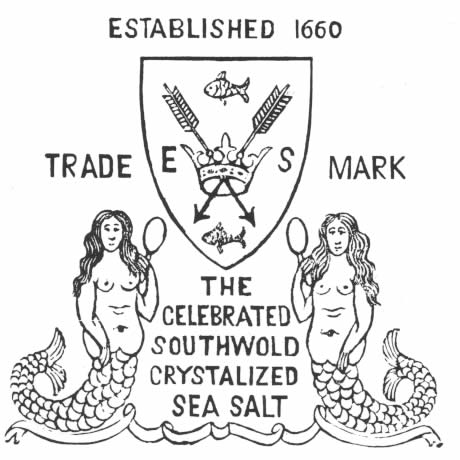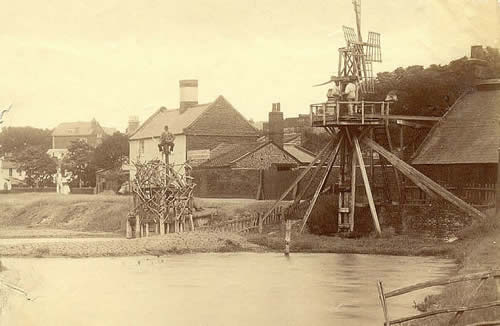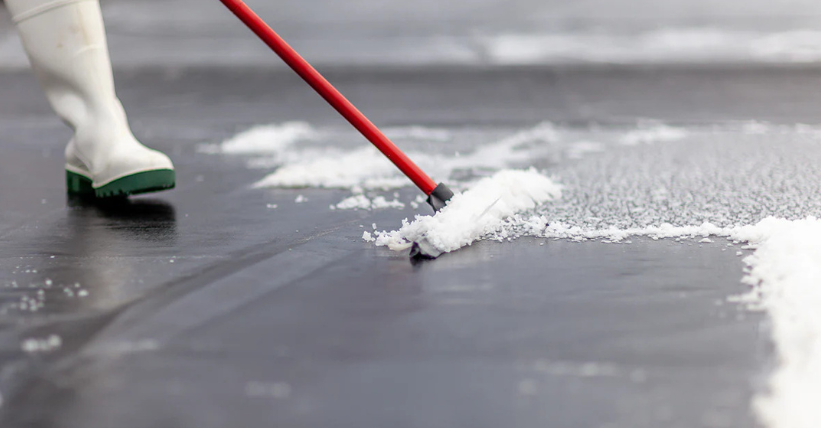By Ned Biggs
The unassuming coastline of Suffolk holds a fascinating and ancient secret: it was once a hub for sea salt production, an industry that has ebbed and flowed with the tides of history. From prehistoric fires to Roman industrialisation, and from medieval monasteries to the Victorian era’s final curtain, the story of salt-making in Suffolk is a compelling one, and one that is now seeing a modest, modern revival.
Deep roots in prehistory
The extraction of salt from seawater on the Suffolk coast is a practice that stretches back an astonishing 3,000 years. Long before the arrival of the Romans, salt was a vital commodity, essential for preserving food and sustaining life.
Archaeological evidence points to activity during the Late Bronze Age (around 1000-800BC). Discoveries on the Stour estuary at Stutton have unearthed pottery fragments and ‘briquetage’, the ceramic pieces used in the salt production equipment. These fragments of basins and heating apparatus show that early salt-making involved heating brackish water over fires to encourage evaporation and crystallisation – a labour-intensive process that laid the groundwork for future industries.
The Roman industrialisation
The Roman occupation of Britain saw the Suffolk salt industry grow exponentially, reaching an almost industrial scale. The broad, flat tidal marshes of the East Anglian coast, including significant areas in Suffolk, were perfectly suited for the expansion of this essential trade.
One of the most revealing sites is near the small Roman town of Hacheston. Excavations there have uncovered the remains of salterns (salt works), including large, fire-scorched pits and more briquetage, sometimes featuring a vitrified salt glaze on the surface of the ceramic pans. Further archaeological reports suggest similar Roman salt works existed on the Alde estuary near Snape and Iken.
The most enduring visual testament to this massive operation is the presence of ‘red hills’. These mounds are the accumulated waste product – burnt, reddish-coloured clay rubble – left behind by centuries of salt-making. They are a distinctive feature of the East Anglian and Essex coastlines, silently marking the scale of the Roman operation.
Anglo-Saxon and medieval periods
Following the Roman withdrawal, salt production continued, adapting to the changing landscape and the developing medieval economy.
The first ‘official’ documentation of this local industry came with the Domesday Survey of 1086. This monumental record noted 20 ‘salinae’ (salt pans) specifically along the Suffolk coast or within the flow of the salt tides, confirming the continuity and established nature of salt-making in the region following the Anglo-Saxon era.
The ever-shifting shingle spit of Orford Ness, for example, began to form salt marshes that were put to use by local people for grazing and, very likely, salt manufacture. Further up the coast, the once-important medieval port of Dunwich played a key role in the salt trade, with its vast trading networks exporting salt to other parts of the country and beyond before the sea eventually claimed the town.
The establishment of religious houses also intersected with the salt industry. The original site of Leiston Abbey, founded in 1183, was situated within the tidal salt marsh, an area that would have been a natural location for medieval salt manufacture, demonstrating how essential the practice was to the local economy and resource management of the time.
Southwold: the post-medieval powerhouse
The last major chapter of Suffolk’s commercial salt story took place in Southwold. In 1660, following a devastating fire that ravaged the town, King Charles I granted a charter to establish a commercial salt works, providing a much-needed injection of economic hope.
The works, located between Ferry Road and the Common, employed a method that involved allowing seawater to flood a creek off the River Blyth on high spring tides. The water was left to naturally evaporate and concentrate, forming a brine which was then stored in a well.
This enriched brine was channelled via a wind pump (augmented by a hand pump when necessary) into a succession of coal-fired iron evaporating pans. Here, the brine was boiled down at varying temperatures to produce crystalline salt of different grain sizes. To ensure a high-quality finished product, the sea salt was often blended with mined rock salt, which, after 1670, was sourced domestically from the huge new deposits found in Cheshire.
The peak of Southwold’s prosperity arrived with the establishment of the Free British Fishery in 1750, which designated the town as an important centre. This led to a massive, soaring demand for salt to preserve the burgeoning herring catch. The works, which at one point held over 1,000 tonnes of crude salt in stock, became a vital component of the local fishing economy.
The long decline
Despite its temporary boom, the Southwold salt works faced perennial struggles. It was a notoriously labour-intensive, low-profit business with numerous challenges:
- Competition: The discovery and wide availability of Cheshire rock salt from 1670 onwards posed a major competitive threat.
- Taxation: The imposition of a Salt Tax in 1702 significantly hampered the viability of the venture. While the tax was finally repealed in 1825, the long-term damage was done.
- Industry slump: The decline of the fishing industry that had powered its growth further diminished the need for vast local salt supplies.
Commercial salt production in Southwold officially ceased in 1893. In an enterprising effort to stave off complete closure, the works survived for a few more years by embracing the emerging tourist industry. They offered ‘brine therapy’ – health-giving salt baths – in a thatched bath house powered by a small windmill, before finally closing around the turn of the century. The last remaining salt works buildings and the iconic wind pump were demolished in the mid-1930s.
A modern revival
For much of the 20th century, the history of Suffolk sea salt remained a historical curiosity, its physical presence reduced to the archaeological red hills and a few place names.
However, the 21st century has seen a modest but dedicated revival of this ancient craft. In the 132 years since Suffolk’s saltworks produced its last flake of sea salt, the world has gained a stronger understanding of the necessity for sustainable practices and methods of production that can fulfil our requirements without compromising the needs of future generations.
Recognising the unique flavour profile and artisanal appeal of traditional sea salt, small-scale producers have begun to once again harvest salt from the clean coastal waters, connecting modern consumers with a tradition that began with the Bronze Age people of the Stour estuary. One such local producer is Ned Biggs, who, after several years of experimentation, now makes sea salt through solar evaporation, honouring the traditional methods used by our Suffolk ancestors.
A sustainable process
Unlike another well-known local salt company that uses a gas flame to evaporate its brine, Ned’s method of solar evaporation is a simple one: filtered sea water is poured into in large, shallow trays to evaporate naturally by the sun and wind. The use of a polytunnel reduces evaporation time while sheltering the brine from the elements. The result is pure, white, flaky salt that retains all the minerals found in the sea.
In addition to sea salt flakes, Ned aims to be the UK’s first-ever producer of fleur de sel, a gourmet sea salt that forms as a thin, delicate crust of intricate pyramidal crystals on the surface of the brine as it evaporates. Usually produced in the warmer climes of Southwest France and Portugal, fleur de sel only forms under specific conditions – ones which Ned hopes to replicate with his polytunnel.
But Ned needs your help, as he is currently seeking a new location for his evaporation polytunnel.
This space could be the corner of a field, a disused paddock, or any small patch of level ground that isn’t currently in use. Because the natural evaporation process relies on nothing but the sun and wind, the polytunnel doesn’t require any utilities, like electricity, gas or plumbing. Plus, the slow nature of the evaporation process means visits to the site are kept to a minimum.
If you have an area you think could be suitable for a (42x12ft) polytunnel, please get in touch with Ned at [email protected]
About Ned
Originally from South London, Ned laid his roots in Suffolk after marrying an Ipswich girl and starting a family. A copywriter by trade, he spent 15 years in digital marketing before joining the senior editorial team at Fishing News, covering all aspects of commercial fishing in the UK and Ireland.
With a parent in Cornwall, Ned has spent much of his life in or on the sea, either surfing, fishing or messing about in boats. Since moving to Suffolk 11 years ago, he discovered he could combine his love for the sea with helping to provide a valuable service to others who enjoy this stretch of coastline by becoming a voluntary crewmember on the Felixstowe Lifeboat.





